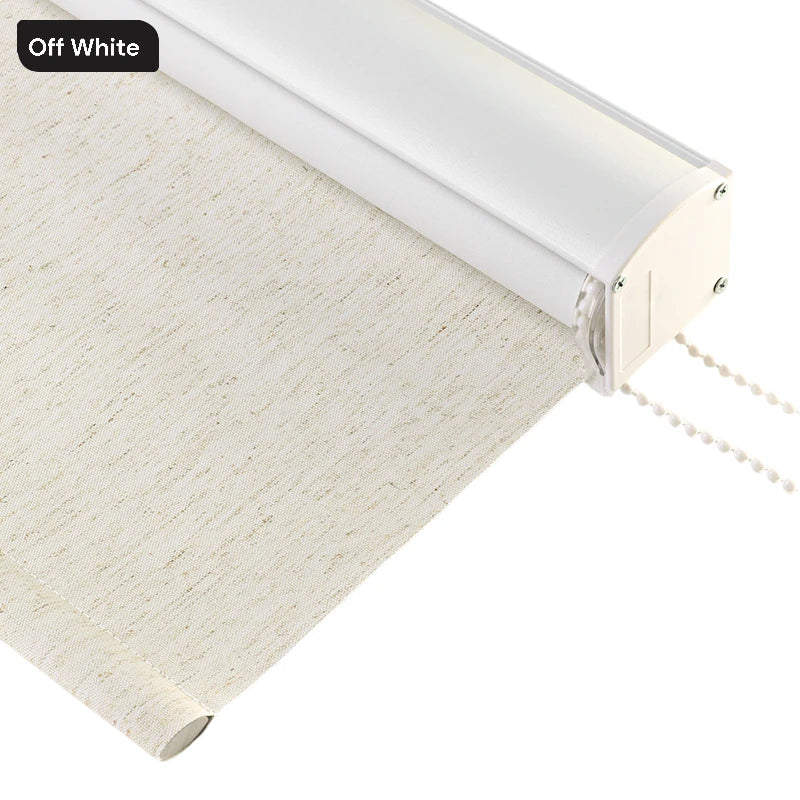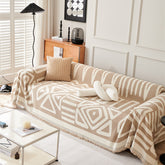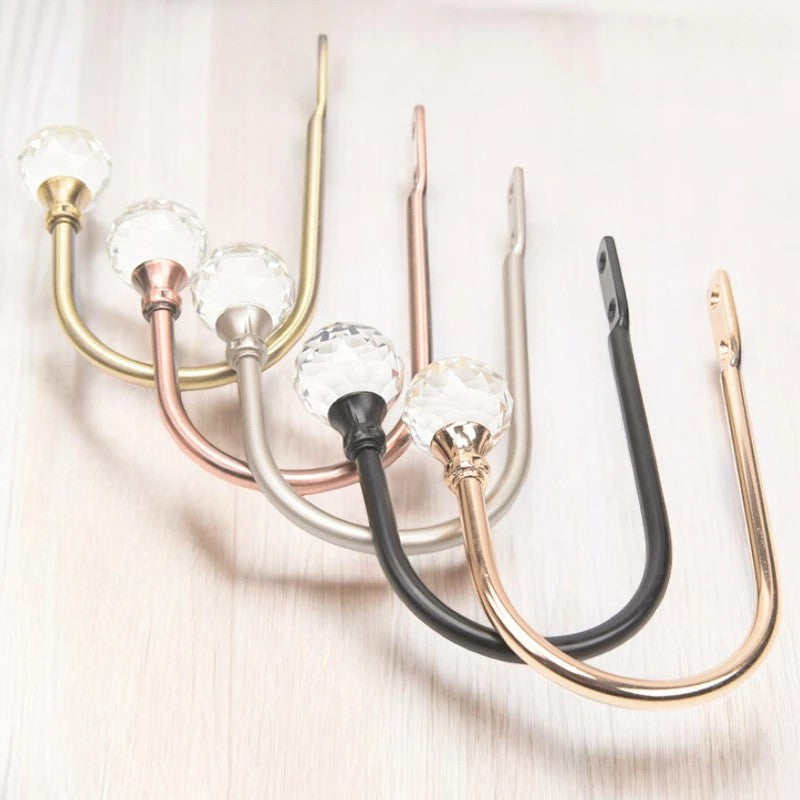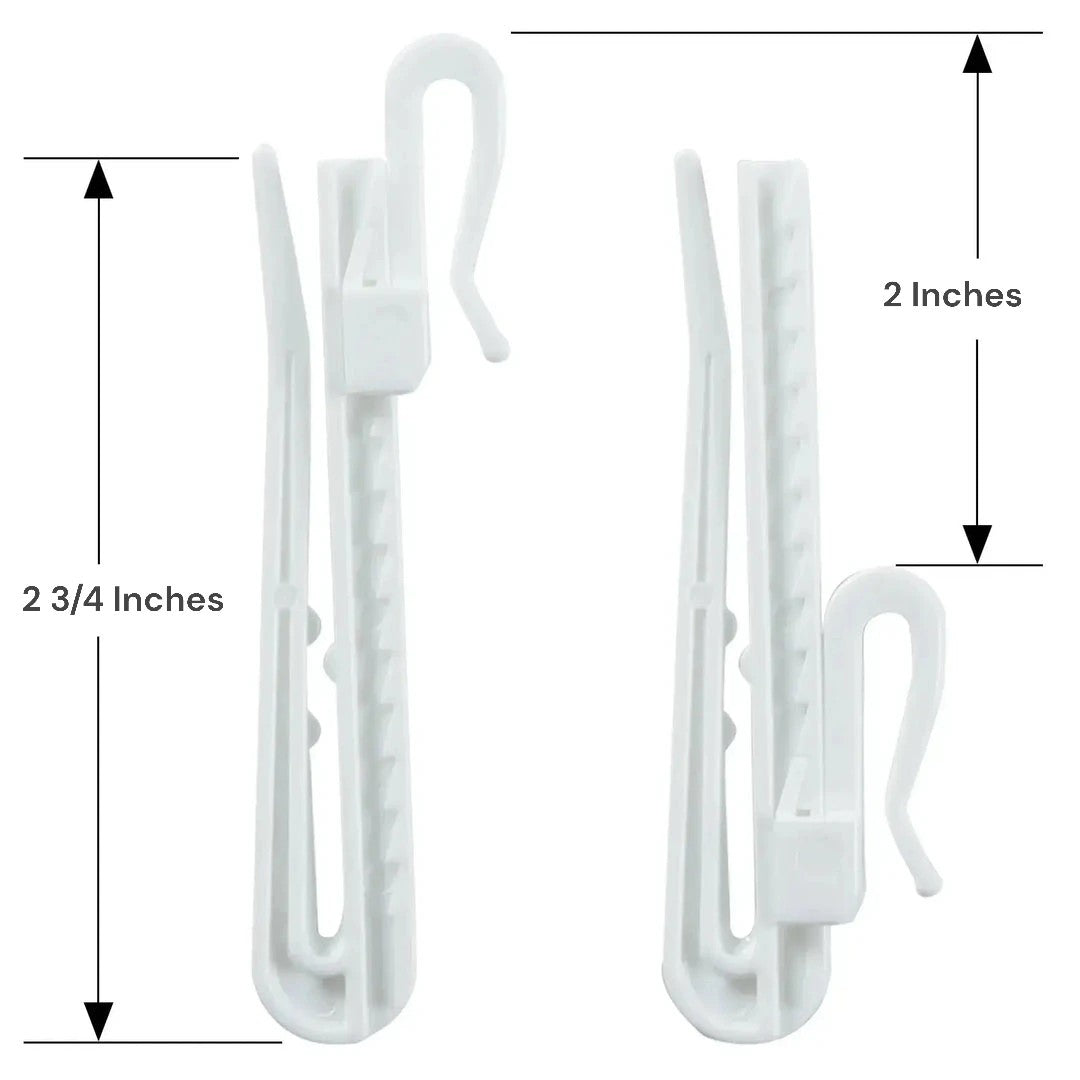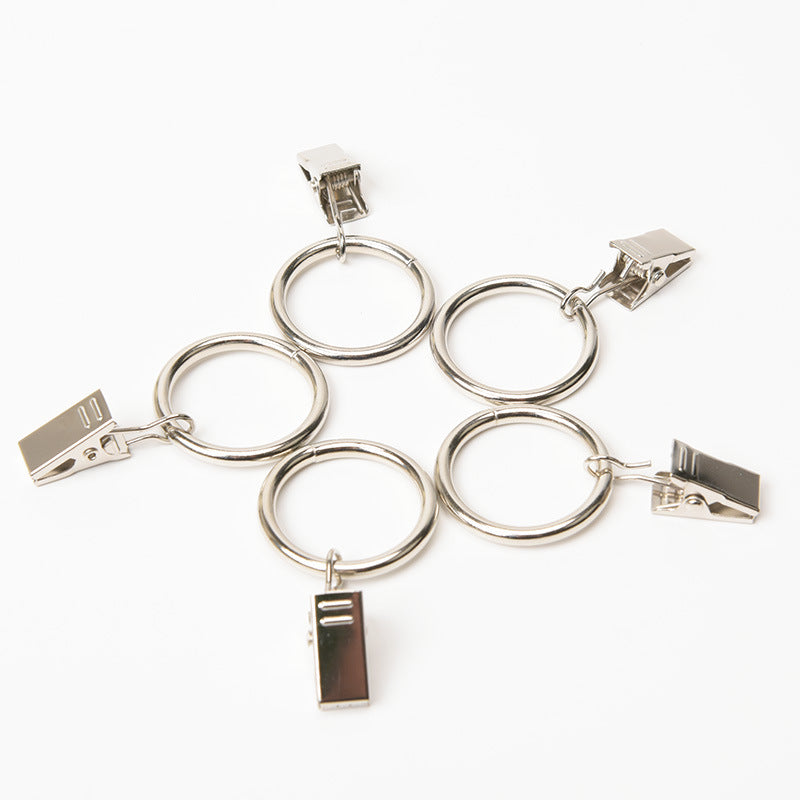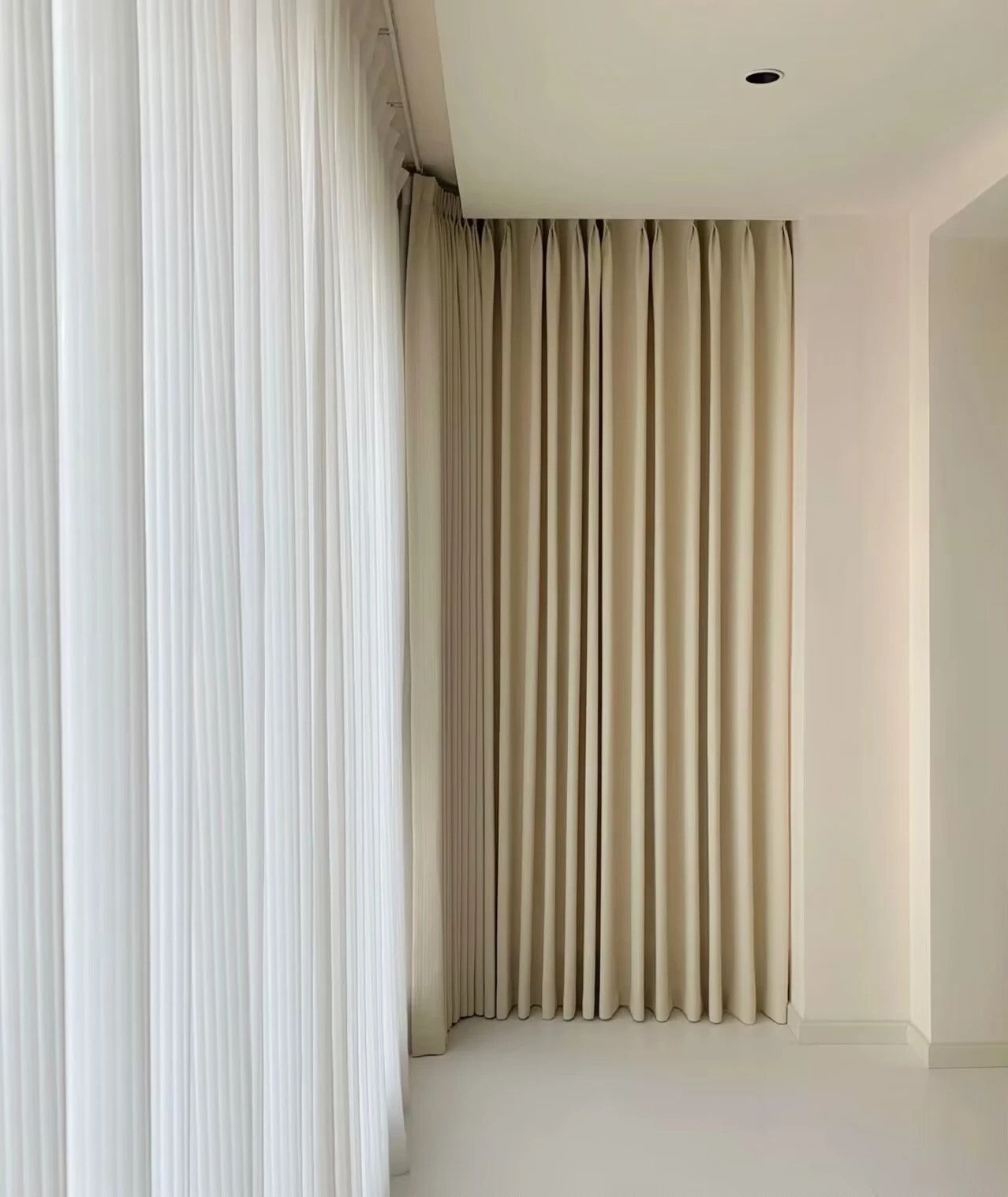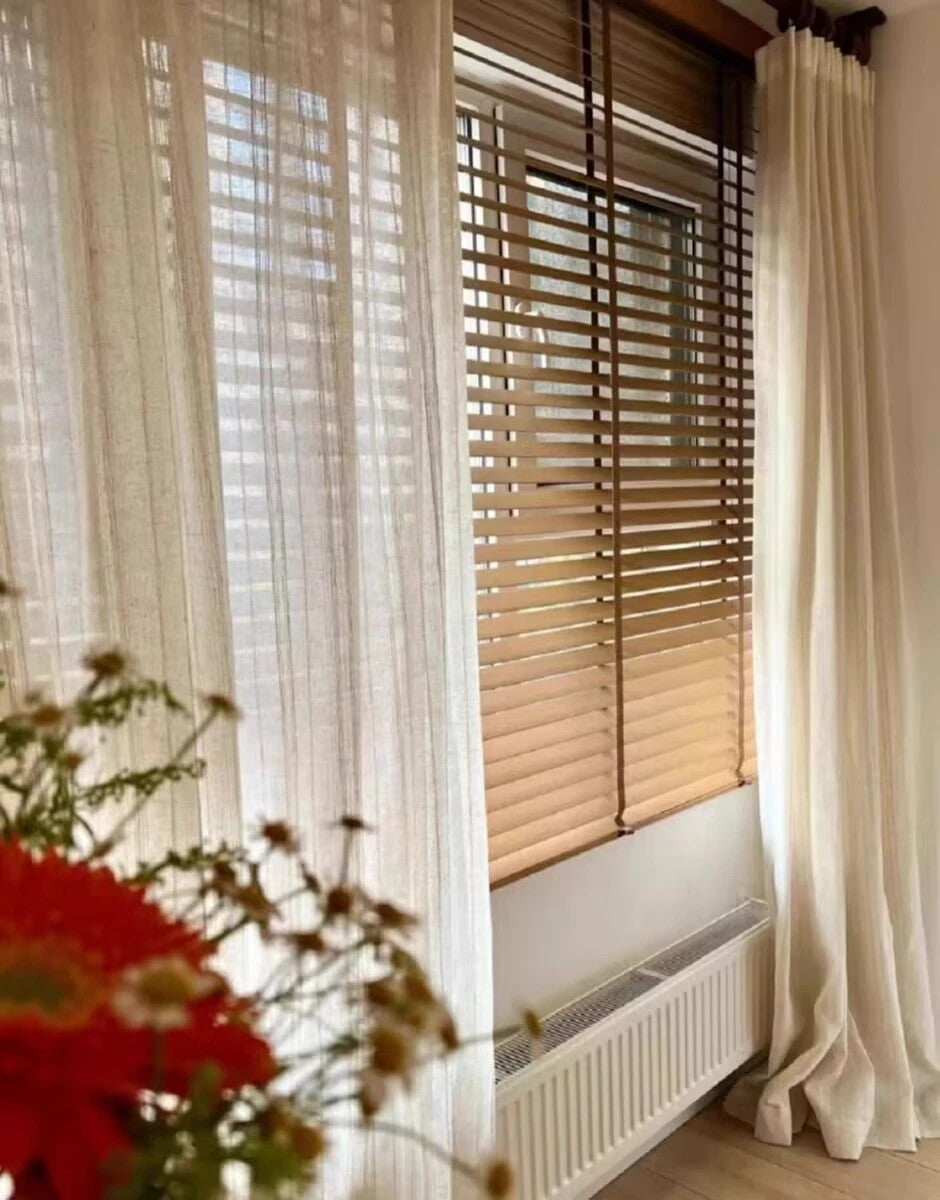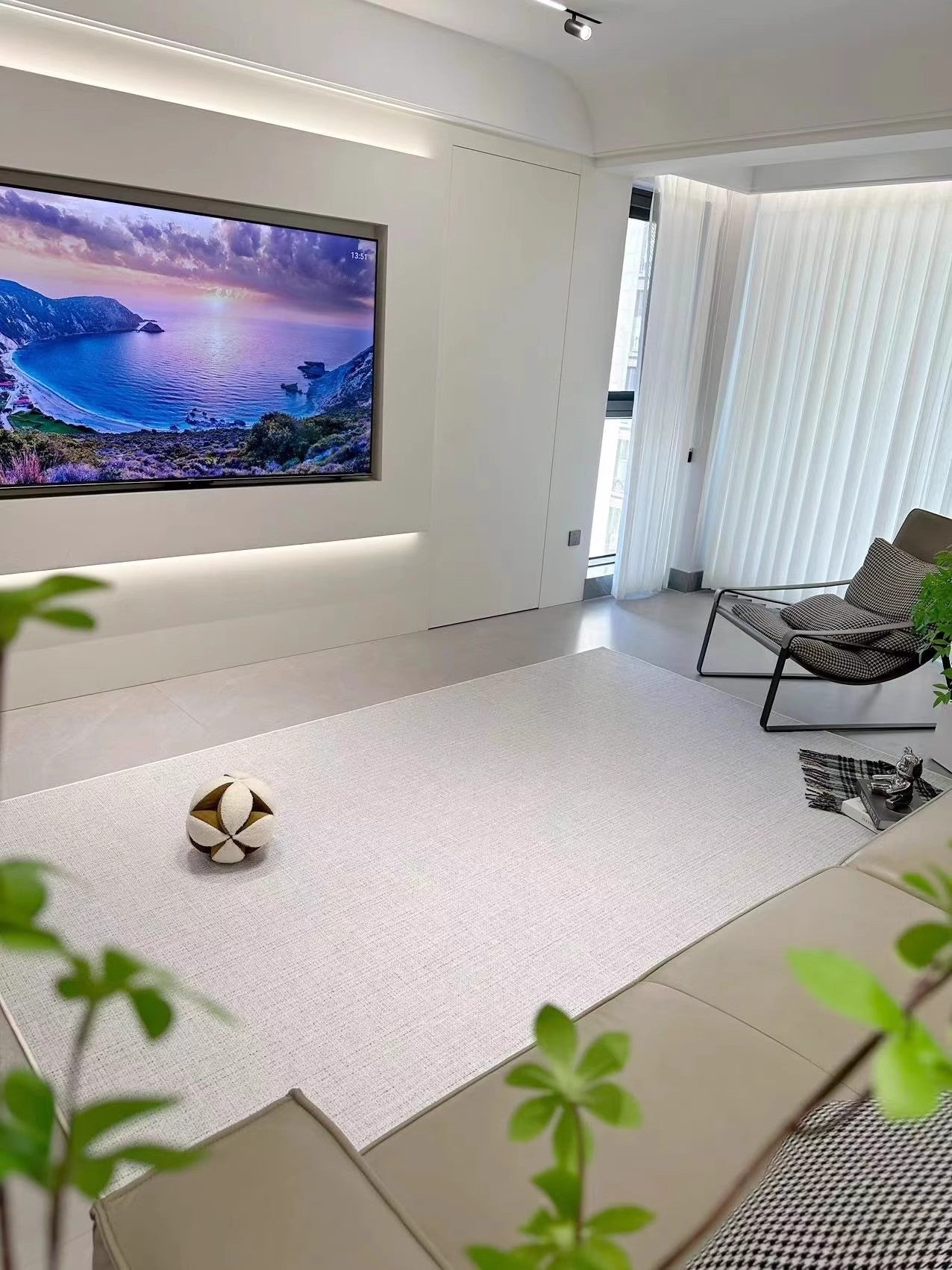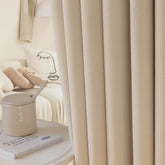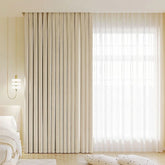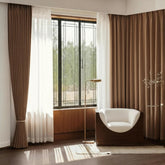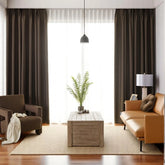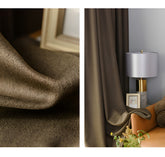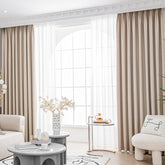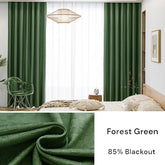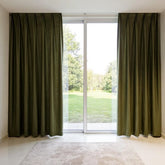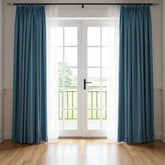The Ultimate Guide to Energy-Efficient and Insulated Curtains
Welcome to our comprehensive guide on energy-efficient and insulated curtains! If you're looking to save money on your energy bills while staying comfortable in your home, you're in the right place. By the end of this guide, you'll have a better understanding of the benefits of energy-efficient and insulated curtains, the different types available, how to choose the right materials and colors, and much more. Let's dive in!
Key Takeaways
- Energy-efficient and insulated curtains can save you money on your energy bills while enhancing the comfort of your home.
- There are various types of insulated curtains available, including thermal curtains, blackout curtains with insulation, and noise-reducing curtains.
- Choosing the right material and color for your insulated curtains is crucial for optimal energy efficiency.
- Compared to blinds, energy-efficient curtains provide better insulation, reducing heat loss by about 37% during the winter.
- Proper installation and maintenance of insulated curtains is essential for their effectiveness.
- Window coverings play a significant role in saving energy, and there are many strategies to maximize energy efficiency in your home.
Benefits & Disadvantages of Energy-Efficient Curtains
At Dolcewe, we understand the importance of creating a comfortable and energy-efficient home. That's why we highly recommend energy-efficient curtains. These curtains offer a variety of benefits that can help you save money on your energy bills and create a more comfortable living environment.
Reduced Energy Consumption
One of the most significant benefits of energy-efficient curtains is their ability to reduce energy consumption. These curtains are designed with insulating properties that can help keep your home warm in the winter and cool in the summer. By reducing the amount of energy needed to regulate your home's temperature, you can save money on your energy bills and reduce your carbon footprint.
Improved Insulation
Another benefit of energy-efficient curtains is improved insulation. These curtains can help prevent drafts and air leaks around your windows, which can lead to significant energy loss. By keeping your home well-insulated, you can create a more comfortable living environment and reduce your energy usage.
"Energy-efficient curtains offer a variety of benefits that can help you save money on your energy bills and create a more comfortable living environment."
Enhanced Privacy
Energy-efficient curtains also offer enhanced privacy. These curtains are designed to block light, sound, and outside views, creating a more private and secluded living space. This can be particularly beneficial for homes in busy or noisy areas.
Overall, the benefits of energy-efficient curtains cannot be overstated. By investing in these curtains, you can save money on your energy bills, enhance the comfort of your home, and contribute to a more sustainable future.
Cons of Energy-Efficient and Insulated Curtains
As with any home improvement product, energy-efficient and insulated curtains have their pros and cons. Let's take a closer look at the disadvantages of using these curtains in your home.
- Cost: While energy-efficient curtains can lead to long-term cost savings on energy bills, they often come with a higher upfront cost compared to regular curtains. However, it's important to consider the potential savings over time when evaluating the overall value.
- Less natural light: Insulated curtains, especially those designed to block out heat, tend to limit the amount of natural light entering your home. While this can be beneficial for maintaining a cooler indoor temperature in the summer, it may also reduce the amount of sunlight you can enjoy during the day.
- Limited view: Thicker and more insulating curtains may restrict the view from your windows when closed. This can be a trade-off for the energy efficiency they provide, as you may need to choose between enjoying the outside view and maximizing insulation.
As with any home improvement decision, it's important to weigh the pros and cons based on your specific needs and preferences. Consider factors like climate, budget, aesthetic preferences, and the importance of energy efficiency when deciding whether energy-efficient and insulated curtains are the right choice for your home.
Types of Insulated Curtains
When it comes to choosing the right insulated curtains, there are several types available. Among the most popular are thermal curtains, blackout curtains with insulation, and noise-reducing curtains. Each type has its unique features and benefits.
Thermal Curtains
Thermal curtains are designed to provide maximum insulation by reducing the amount of heat lost through your windows. They are made from thick, heavy materials such as wool, velvet, or suede, and often have multiple layers to trap heat inside. Thermal curtains are ideal for cold climates and can help reduce your energy bills by keeping your home warm and cozy.

Blackout Curtains with Insulation
Blackout curtains with insulation are an excellent choice for those who want to block out both light and noise while also enhancing energy efficiency. These curtains are made from thick, opaque materials, such as cotton, polyester, or velvet, and often have a layer of insulation to keep your home warm or cool. They are great for bedrooms, media rooms, or any other space where you want to create a dark and quiet environment.
Noise-Reducing Curtains
Noise-reducing curtains are designed to absorb sound waves and reduce noise pollution inside your home. They are typically made from heavyweight materials such as wool, suede, or velvet and may have multiple layers or linings. These curtains are ideal for homes located near busy streets, airports, or other noisy areas. They can help create a peaceful and relaxing environment in any room.
- Thermal curtains feature a thick inner lining for enhanced insulation and soundproofing.
- Blackout curtains with insulation provide both light-blocking and thermal efficiency benefits.
- Noise-reducing curtains dampen sound, creating a quieter environment in your home.
When selecting the right type of insulated curtains, consider their intended purpose, your home's climate, and your personal style preferences. Take the time to explore your options and choose curtains that will make your home more comfortable, energy-efficient, and visually appealing.
Choosing the Right Insulated Curtain Material & Color
When it comes to energy-saving window treatments, choosing the right insulated curtain material and color is essential. Not only do you want to ensure maximum insulation, but you also want to complement your interior design.
Choosing the Right Insulated Curtain Material
Insulated curtains are made from a variety of materials, including cotton, polyester, and wool. However, for optimal insulation and energy savings, we recommend curtains with a thermal lining. A thermal lining is a layer of fabric that is designed to block drafts and retain heat, making it perfect for energy-efficient drapes.
If you're looking for eco-friendly drapes, consider materials such as organic cotton, linen, or hemp. These materials are sustainable and biodegradable, making them an excellent choice for homeowners who prioritize environmental conservation.
Choosing the Right Insulated Curtain Color
The color of your curtains can also affect energy efficiency. Choose a color that complements your interior design while maximizing natural light.
Lighter colors reflect heat, making them an excellent option for warmer climates, while darker colors like black absorb heat, making them ideal for colder regions.
When looking for energy-saving window treatments, keep in mind that curtains with a tight weave and a heavier weight provide better insulation than lighter fabrics with a looser weave.
Investing in energy-saving window treatments is an excellent way to reduce your energy bills while creating a more comfortable home.
By choosing the right insulated curtain material and color, you can maximize energy efficiency, aesthetic appeal, and environmental sustainability.
Proper Installation of Insulated Curtains
Installing insulated curtains is a simple process that can significantly enhance your home's energy efficiency. Here's how to do it:
Step 1: Measure Your Windows
To start, measure your window's width and height to determine the appropriate size of your curtains. It's important to note that your curtains should cover the entire window frame and extend beyond it by at least a few inches to block drafts and ensure optimal insulation. You may check our free curtain size calculator to find the perfect size.
Step 2: Choose a Suitable Curtain Rod or Track
Next, choose a suitable curtain rod or track that can support the weight of your curtains. Install the rod or track above your window frame, making sure it's level and secure.
Step 3: Hang Your Curtains
When hanging your curtains, ensure that they are properly attached to the rod or track, with even spacing and no gaps. You may also want to consider adding curtain insulation, such as foam weatherstripping or draft blockers, to the top and sides of your curtains to further reduce drafts and maximize insulation.
Step 4: Make Adjustments
Finally, make adjustments as necessary to ensure that your curtains are properly aligned and sealing off any drafts. By following these simple steps and utilizing additional insulation options, such as draft-blocking curtains, you can effectively enhance your home's energy efficiency.

Investing in insulated curtains is a smart choice for any homeowner who wants to save money on their energy bills and create a more comfortable living environment. So, if you're looking for a simple and effective way to improve your home's energy efficiency, consider installing insulated curtains today!
Caring for Insulated Curtains
Proper care is crucial in maintaining the performance and longevity of your insulated curtains.
By following these simple tips, you can keep your curtains looking and functioning their best, as well as maximizing their energy-saving properties.
- Vacuum your curtains regularly to remove dust and dirt buildup. Use a soft brush attachment to prevent any damage to the fabric.
- If your curtains are machine washable, be sure to follow the care instructions carefully. Use a gentle cycle with cold water and mild detergent. Avoid using bleach or fabric softeners as they can harm the insulation properties of the curtains.
- If you prefer to dry clean your curtains, choose a reputable dry cleaner experienced in handling insulated window coverings. Be sure to mention the insulation properties of the curtains to the dry cleaner so they can handle them accordingly.
- Hang your curtains correctly to prevent any damage to the fabric. Do not pull or tug on the curtains, and avoid using sharp objects near them.
- If you notice any damage to the curtains, such as holes or tears, patch them immediately to prevent further damage to the insulation.
Insulated window coverings, including curtains, are an effective way of reducing your energy bills and enhancing the comfort of your home. Ensure you provide them the care they need to keep them functioning optimally as energy-efficient window curtains.
Energy-Efficient Curtain Designs
When it comes to energy-efficient and insulated curtains, their eco-friendliness and energy-saving properties do not mean that you have to compromise on style or design. There is an impressive range of energy-efficient curtain designs that can complement various home styles and decor preferences.
Sustainable Materials
One popular option is to choose curtains made of sustainable materials, such as organic cotton or linen. These curtains not only reduce your energy consumption but also promote eco-consciousness and support sustainable practices.
Neutral or Light Colors
Another excellent option is to opt for curtains with neutral or light colors that can reflect sunlight and heat, keeping your home naturally cooler during warmer months.
The color of your curtains can also affect the mood and ambiance of your rooms. For instance, light and sheer curtains can create a breezy and relaxed atmosphere, while heavy and dark drapes can add a sense of coziness and warmth. You may check the curtain colors psychology guide.
Patterns and Textures
You can also experiment with different patterns and textures to add visual interest and depth to your energy-efficient curtains.
Consider trendy geometric designs or classic floral patterns for a stylish touch. Additionally, curtains with added layers or texture, like ruffles or pleats, can enhance the insulation properties of the curtains, keeping your home comfortable and energy-efficient all year round.
By exploring energy-efficient curtain designs, you can enjoy the best of both worlds: a beautiful home and considerable energy savings.
Tips for Maximizing Energy Efficiency with Curtains
To fully optimize energy efficiency, it's important to utilize your curtains effectively throughout the year. Energy-efficient curtains can help you save money on your energy bills and maintain a comfortable living environment. Here are some tips to help you make the most of your curtains:
- Seal Air Gaps: Look for curtains with magnetic strips or thermal linings to effectively seal air gaps around your windows. These gaps can contribute to heat loss in the winter and heat gain in the summer.
- Choose Light-Colored Liners: Opt for curtains with light-colored liners, as they can reflect sunlight during the summer months, preventing excessive heat from entering your home. This can reduce the load on your cooling system and lower your energy consumption.
- Measure Accurately: Ensure that your curtains provide full coverage for your windows. Measure the width and length accurately to prevent any gaps that may allow heat transfer.
- Close Curtains During the Day: In the summer, keep your curtains closed during the day to block out the sun's heat and prevent it from warming up your home. This can help reduce your reliance on air conditioning and lower your energy usage.
- Open Curtains on Sunny Winter Days: On sunny winter days, open your curtains to allow natural sunlight to warm up your home. This can supplement your heating system and help reduce your winter energy bills.
- Close Curtains at Night: In the winter, close all curtains at night to retain the heat generated by your heating system. This can help keep your home cozy and reduce heat loss through the windows.
Remember, curtains are not the only window treatment option for energy efficiency. Other options, such as insulated cellular shades, window quilts, roller and roman shades, louvered blinds, and window films, can further enhance energy efficiency and comfort in your home. Explore these options and choose the ones that best suit your needs and preferences.

Insulating Window Treatments Beyond Curtains
While energy-efficient and insulated curtains are an excellent option for enhancing your home's energy efficiency, they are not the only solution. Insulating window treatments such as energy-efficient blinds, shades, and shutters can also help you save money on your energy bills while keeping your home comfortable.
When selecting insulating window treatments, consider the material and style that best complements your home's decor and desired level of insulation. Eco-friendly and sustainable options are increasingly popular, providing both insulation and environmental benefits.
Energy-efficient blinds come in various styles, including honeycomb, roller, and vertical. They offer superior insulation and light control, allowing you to regulate the amount of sunlight and heat that enter your home. Insulating window treatments like these are especially beneficial for large or open spaces like living rooms and kitchens.
Layering insulating window treatments can also provide additional energy savings. By combining blinds or shades with energy-efficient curtains, you can create a more versatile and customizable insulation solution that suits your specific needs.
Ultimately, selecting the right insulating window treatments for your home can make a significant impact on your energy savings and overall comfort. Consider exploring sustainable and energy-efficient options beyond curtains to maximize your energy efficiency potential.
Window coverings are an essential element of a home's energy efficiency strategy. By choosing the right window treatments and using them correctly, you can significantly reduce energy consumption and costs. Let's explore some energy-saving window solutions that can help lower your energy bills and enhance your home's comfort.
Energy-Efficient Drapes
One of the most popular and effective window treatment options is drapes. Energy-efficient drapes are made from thick materials that can block out sunlight and trap heat, making them an ideal choice for colder climates. They are available in a wide range of colors, styles, and patterns, so you can choose the one that best fits your decor while also providing energy savings. For maximum efficiency, make sure to select high-quality insulated drapes with tight-weave fabrics that can reduce heat loss through windows.
Shades and blinds can also be used as insulating window treatments. Cellular shades or honeycomb blinds are specifically designed to trap air and prevent heat loss, making them ideal for colder climates. In contrast, reflective blinds are perfect for hot climates as they can block sunlight and reduce heat gain. For maximum efficiency, make sure to install shades or blinds correctly, leaving no gaps between them and the window frame.
Window Film
Window films are a thin layer of plastic that can be applied to the inside of existing windows. They work by reflecting sunlight and blocking UV rays, which can contribute to heat gain. Window films are available in various levels of opacity, allowing you to choose the one that works best for your needs while still maintaining visibility and natural light. They are a cost-effective option for reducing heat loss and gain and improving insulation.
Window Quilts
Window quilts are another insulating option that can be used in colder climates. They are large pieces of fabric that can be mounted on the inside of a window frame, covering the glass entirely. Window quilts can be made from a variety of materials, including wool, cotton, or synthetic fabrics. They offer excellent insulation by trapping air between the fabric and the window, reducing heat loss and preventing drafts.
| Curtain Type | Benefits |
|---|---|
| Energy-Efficient Curtains | Minimize heat loss and gain, reduce energy bills |
| Insulated Cellular Shades | Provide additional insulation and soundproofing |
| Window Quilts | Offer insulation and noise reduction |
| Roller and Roman Shades | Block sunlight and offer privacy |
| Louvered Blinds | Allow for adjustable light and airflow control |
| Window Films | Block UV rays and reduce glare |
By using energy-saving window solutions like these, you can significantly lower your energy bills and create a more comfortable living environment. Consider combining these window coverings with other energy-efficient strategies like weatherstripping, smart home technology, or other energy-saving solutions for maximum benefits.
Enhancing Energy Efficiency in Different Rooms
When it comes to enhancing energy efficiency in different rooms, there are numerous considerations to keep in mind. By choosing the right window coverings and incorporating energy-efficient home decor, you can significantly improve your home's comfort and sustainability.
Living Room
The living room is often the central gathering place of the home, making it crucial to optimize energy efficiency. Start by selecting energy-efficient window coverings like insulated curtains or blinds. A great way to further reduce energy consumption is by utilizing natural light as much as possible. Remove any obstacles blocking the windows and consider adding reflective surfaces to bounce light into darker corners. Incorporating energy-efficient LED lighting is another effective way to reduce energy consumption and costs in the living room.
Bedroom
The bedroom is a sanctuary for rest and relaxation, so it's important to maintain a comfortable and eco-friendly environment. Choose insulated curtains or shades to block out unwanted light and regulate the temperature in the room. Consider investing in bedding made from sustainable materials such as organic cotton or bamboo. These materials not only reduce your environmental footprint but are also naturally hypoallergenic and breathable for a better night's sleep. Adding energy-efficient lighting and selecting a mattress made from natural and non-toxic materials can further enhance your bedroom's comfort and sustainability.
By taking these small but significant steps to enhance energy efficiency in different rooms, you can create a more comfortable and sustainable home environment.
Conclusion
Investing in energy-efficient and insulated curtains is a smart choice for any homeowner. Not only do they help reduce energy consumption and lower your bills, but they also enhance the overall comfort of your home. From understanding the benefits of energy-efficient curtains to exploring different types of insulated curtains, we hope that this guide has helped you choose the right curtain solution for your home.
To maximize the benefits of energy-efficient curtains, it's important to select the appropriate material and color, properly install and maintain your curtains, and consider other energy-saving window treatments. Additionally, we encourage you to explore other ways to enhance energy efficiency in your home. By taking small steps such as weatherstripping your windows, installing smart home technology, or simply turning down your thermostat a few degrees, you can significantly reduce your energy consumption and contribute to a more sustainable future.
Saving energy and money is a win-win situation. We hope that this guide has helped you make informed decisions to increase your energy efficiency and save money. So why wait? Invest in energy-efficient curtains today and start enjoying the benefits of a more comfortable and sustainable home.
FAQ
What are energy-efficient curtains?
Energy-efficient curtains are specially designed curtains that help reduce energy consumption in a home. They are made with insulating materials and have properties that help block out heat or cold, keeping the indoor temperature more stable and reducing the need for heating or cooling.
How do energy-efficient curtains save money?
Energy-efficient curtains help save money by reducing the amount of energy needed to heat or cool a home. By blocking out heat during the summer and retaining warmth during the winter, they reduce the strain on HVAC systems, leading to lower energy bills.
What are the benefits of using energy-efficient curtains?
Energy-efficient curtains offer several benefits. They can improve insulation, reduce outside noise, enhance privacy, and protect furniture and flooring from damaging UV rays. Additionally, they contribute to a more comfortable and environmentally friendly living space.
What types of insulated curtains are available?
There are different types of insulated curtains available, including thermal curtains, blackout curtains with insulation, and noise-reducing curtains. Each type has unique properties that cater to specific needs, such as blocking out light, reducing drafts, or minimizing outside noise.
How do I choose the right insulated curtain material and color?
When choosing insulated curtain materials, consider factors such as thickness, weight, and insulation properties. Additionally, selecting the right color can complement your interior design while maximizing energy efficiency. Look for energy-saving window treatments and eco-friendly drapes that suit your preferences.
How do I properly install insulated curtains?
Proper installation of insulated curtains is crucial for their effectiveness. Follow a step-by-step process to ensure they are securely hung and seal out drafts. You can also use curtain insulation techniques and accessories to further enhance the energy efficiency of your curtains.
How should I care for insulated curtains?
To maintain the performance and longevity of insulated curtains, proper care is necessary. Regularly clean them according to the manufacturer's instructions to remove dust and maintain their insulation properties. Avoid using harsh chemicals that may damage the fabric or reduce its effectiveness as energy-efficient window coverings.
What are some energy-efficient curtain designs?
Energy-efficient curtain designs encompass a wide range of styles, from eco-friendly curtains made with sustainable materials to innovative designs that improve insulation. Explore various options that align with your personal style and contribute to a greener planet.
Are there other insulating window treatments besides curtains?
Yes, curtains are not the only option for energy-efficient window treatments. You can explore alternatives such as blinds, shades, and shutters that offer insulation and energy savings. Look for sustainable window treatments that align with your goals for energy efficiency.
How can window coverings help save energy?
Window coverings, including curtains, blinds, and shades, play a significant role in saving energy. By properly selecting and installing them, you can minimize heat transfer through windows, reducing the need for heating or cooling. Additionally, combining window coverings with weatherstripping and smart home technology can further enhance energy efficiency.
How can I enhance energy efficiency in different rooms?
Each room in your home has unique energy efficiency needs. Consider factors such as sunlight exposure, insulation, and window size when choosing window coverings. Explore energy-efficient home decor options and tailor your choices to maximize energy savings in specific rooms, such as living rooms and bedrooms.



